UNCLE TOM'S CABIN
AS A
MAGIC LANTERN SHOW:
CLICK THE ICON AT RIGHT
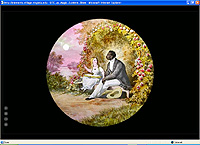
UNCLE TOM'S CABIN AS A MAGIC LANTERN SHOW: CLICK THE ICON AT RIGHT |
 |
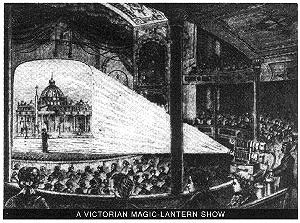
|
The magic lantern was invented in Europe in the 17th century. By the
end of the 18th, it was being used to entertain audiences in the United
States. During the second half of the 19th century it was a very popular
form of mass entertainment, until motion pictures replaced it early in the 20th. Oxygen and hydrogen
were burned on a limestone
surface to produce limelight, which was projected through colored scenes
hand-painted on glass slides, resulting in brilliant images that could be shown
to up to hundreds of people at a time. |
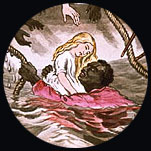
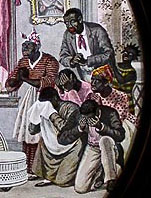
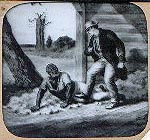
|
Stowe's novel was apparently translated into this medium as early
as September, 1853. According to A History of the New York Stage, George Lea
decided to take advantage of the record-setting popularity of Aiken's
dramatization of Uncle Tom's Cabin at Purdy's National Theatre to exhibit
the story in "magic lantern views" at his Franklin Museum: "many a 'country
cousin' found him or herself here who thought it was Purdy's place of
amusement. A brass band was stationed on the balcony to attract the
stranger."* Professional lantern performances of the novel included a showman introducing the slides, and probably offering dramatic readings of scenes from the novel, as well as musical accompaniment, but no script for Lea's representation has been found. All that's known is that it organized the story into 3 parts and 25 pictures. The various kinds of slides available below were all manufactured later in the century by the C. W. Briggs Company. They were designed in 1881 by Joseph Boggs Beale, America's leading magic lantern artist. Except for the tenth slide, "Eva's Dying Farewell," Beale's images closely copy the drawings that Hammatt Billings' prepared for the Illustrated Uncle Tom's Cabin published by Jewett and Co. in late 1852, and it is interesting to note which of the 117 scenes Billings illustrated were chosen in order to tell Stowe's story in a dozen slides (CLICK HERE to see the Billings' illustrations). It's also interesting to note how the one image that dates from the 1880s represents Tom, Topsy and the other slaves at Eva's bedside much more stereotypically than Billings did (see detail at left) -- this reflects the influence of the "Tom Shows" that began appearing in the mid-1870s. Also in 1881, someone at Briggs' company wrote a 6-PAGE SCRIPT for the use of lantern showmen who bought the slide set. Over the years many different "editions" of this 12-image set were produced, reflecting the range of magic lantern entertainments. Below, dating from the 1880s, are the high-quality hand-colored versions that would have been used in a professional lantern show. By CLICKING HERE you can see examples of the many different versions of Beale's slides that were produced by different manufacturers over the next 40 years, including many that were obviously intended for home use, the market niche that lantern companies turned to as movies drove slide shows out of theaters. At least one British "edition" of the novel as a magic lantern show was published as well. It retold Stowe's story through 24 images. To see this set, CLICK HERE. |
| The images on this page, and most of the information here about the magic lantern, were provided by Terry Borton, The American Magic-Lantern Theater. | |
